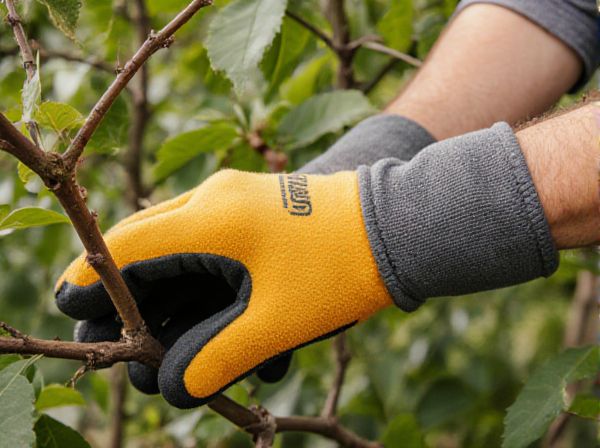
Pruning Harvest vs Shearing Harvest Illustration
Pruning harvest targets selective cutting to promote healthy growth and improve fruit quality by removing specific branches, while shearing harvest involves trimming the entire canopy uniformly to maintain plant size and shape. Pruning harvest enhances air circulation and sunlight penetration, benefiting fruit development and reducing disease risk. Shearing harvest is faster and suited for crops where uniformity is prioritized over selective growth control.
Table of Comparison
| Aspect | Pruning Harvest | Shearing Harvest |
|---|---|---|
| Definition | Selective cutting of branches or parts to promote growth. | Cutting entire top growth uniformly across the plant. |
| Yield Quality | Higher quality, better fruit/flower development. | Moderate quality, suitable for biomass collection. |
| Growth Impact | Encourages strong, healthy regrowth. | May cause stress, slower regrowth. |
| Labor Intensity | More labor-intensive due to selective cuts. | Less labor-intensive and faster process. |
| Best Use | Fruit orchards, vineyards, specialized crops. | Grasslands, fodder crops, quick biomass harvesting. |
Understanding Pruning Harvest: Definition and Benefits
Pruning harvest involves selectively cutting specific branches or parts of a plant to enhance overall health and productivity, promoting better fruit quality and growth control. This method allows plants to allocate energy efficiently, reducing disease risks and encouraging stronger yields in the next growing season. Understanding pruning harvest helps farmers optimize crop performance by maintaining ideal plant structure and maximizing sunlight exposure.
What Is Shearing Harvest? An Overview
Shearing harvest is a method of cutting crops or plants by trimming the foliage closely to the base, promoting faster regrowth and maintaining plant health. This technique is commonly applied in forage crops like alfalfa and grasses to ensure optimal biomass yield and quality. It contrasts with pruning harvest, which focuses on selectively removing branches or stems to enhance fruit or flower production rather than biomass.
Key Differences Between Pruning and Shearing Harvest Methods
Pruning harvest involves selectively cutting specific branches or parts of a plant to promote healthy growth and improve fruit quality, while shearing harvest entails trimming a large portion of the plant uniformly to control shape and size. Pruning targets individual stems or branches to enhance plant structure and productivity, whereas shearing focuses on rapid, extensive biomass removal, often used in hedge or turf management. The key difference lies in precision and purpose: pruning is a detailed, growth-focused approach, and shearing is a broader, maintenance-oriented method.
Impact of Pruning Harvest on Plant Health
Pruning harvest enhances plant health by removing dead or diseased branches, improving air circulation and sunlight penetration, which reduces the risk of fungal infections. This selective cutting promotes vigorous new growth and increases fruit or flower production compared to shearing harvest, which often results in uniform but denser foliage that can trap moisture and foster pests. Proper pruning supports the plant's structural integrity and longevity, contributing to a healthier and more productive harvest cycle.
Effects of Shearing Harvest on Crop Quality
Shearing harvest involves cutting the entire plant close to the ground, which can promote uniform regrowth and consistent crop cycles, enhancing overall yield quality. This method reduces disease incidence by removing infected foliage and minimizes pest habitats, contributing to healthier crops. However, excessive shearing may stress plants, potentially lowering nutritional content and altering flavor profiles in sensitive crops.
When to Use Pruning vs. Shearing for Optimal Yields
Pruning harvest is ideal during late winter or early spring when plants are dormant, allowing for precise removal of dead or weak branches to promote healthier growth and higher yield. Shearing harvest is best used during the growing season to maintain shape and encourage dense foliage, which optimizes photosynthesis and fruit production. Choosing pruning for structural management and shearing for shaping ensures maximum crop output and plant vitality.
Tools and Techniques for Effective Pruning Harvest
Pruning harvest involves selective cutting using tools such as hand pruners, loppers, and pruning saws to remove specific branches and improve plant health and yield, while shearing harvest employs hedge trimmers or electric shears to uniformly trim the outer foliage primarily for shape maintenance. Effective pruning requires precise techniques like thinning cuts and heading cuts to stimulate growth and air circulation, whereas shearing focuses on rapid, less detailed cutting to maintain size and form. Mastery of these tools and methods ensures optimal productivity and longevity of crops during the harvest season.
Best Practices for Shearing Harvest Success
Shearing harvest requires precise timing and consistent cutting height to ensure optimal regrowth and maximize biomass yield. Regular maintenance of shearing equipment and careful removal of plant material without damaging crowns are critical practices for sustaining turf health. Implementing these best practices promotes vigorous recovery and enhances overall harvest quality compared to pruning harvest techniques.
Common Mistakes in Pruning and Shearing Harvests
Common mistakes in pruning harvests include cutting too close to buds, which can damage plant growth, and uneven cuts that expose plants to disease. In shearing harvests, over-trimming can reduce plant vigor and lead to sparse foliage, while failing to maintain consistent shear height results in irregular shapes and reduced yield. Proper timing and technique are crucial to avoid stress and optimize harvest quality in both methods.
Choosing the Right Harvest Method for Your Garden
Pruning harvest focuses on selectively cutting specific branches or stems to promote healthy growth and improve fruit or flower quality, ideal for gardeners seeking precision and plant health. Shearing harvest involves trimming large areas quickly, which suits maintaining uniform appearance and controlling size in hedges or ground covers. Choosing the right harvest method depends on plant type, desired outcomes, and garden maintenance goals to optimize yield and aesthetics.
Pruning Harvest vs Shearing Harvest Infographic

 gardendif.com
gardendif.com